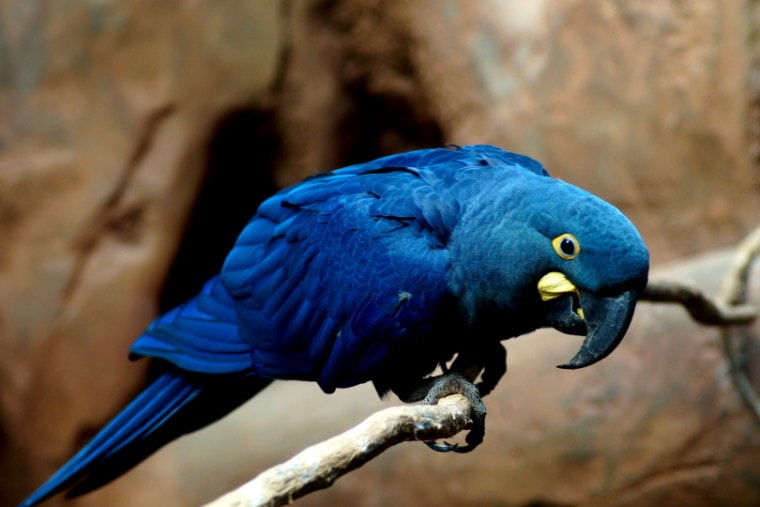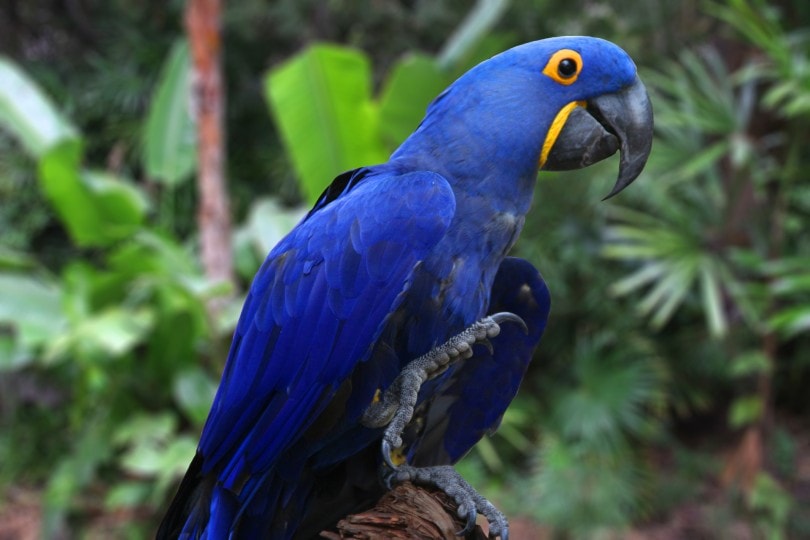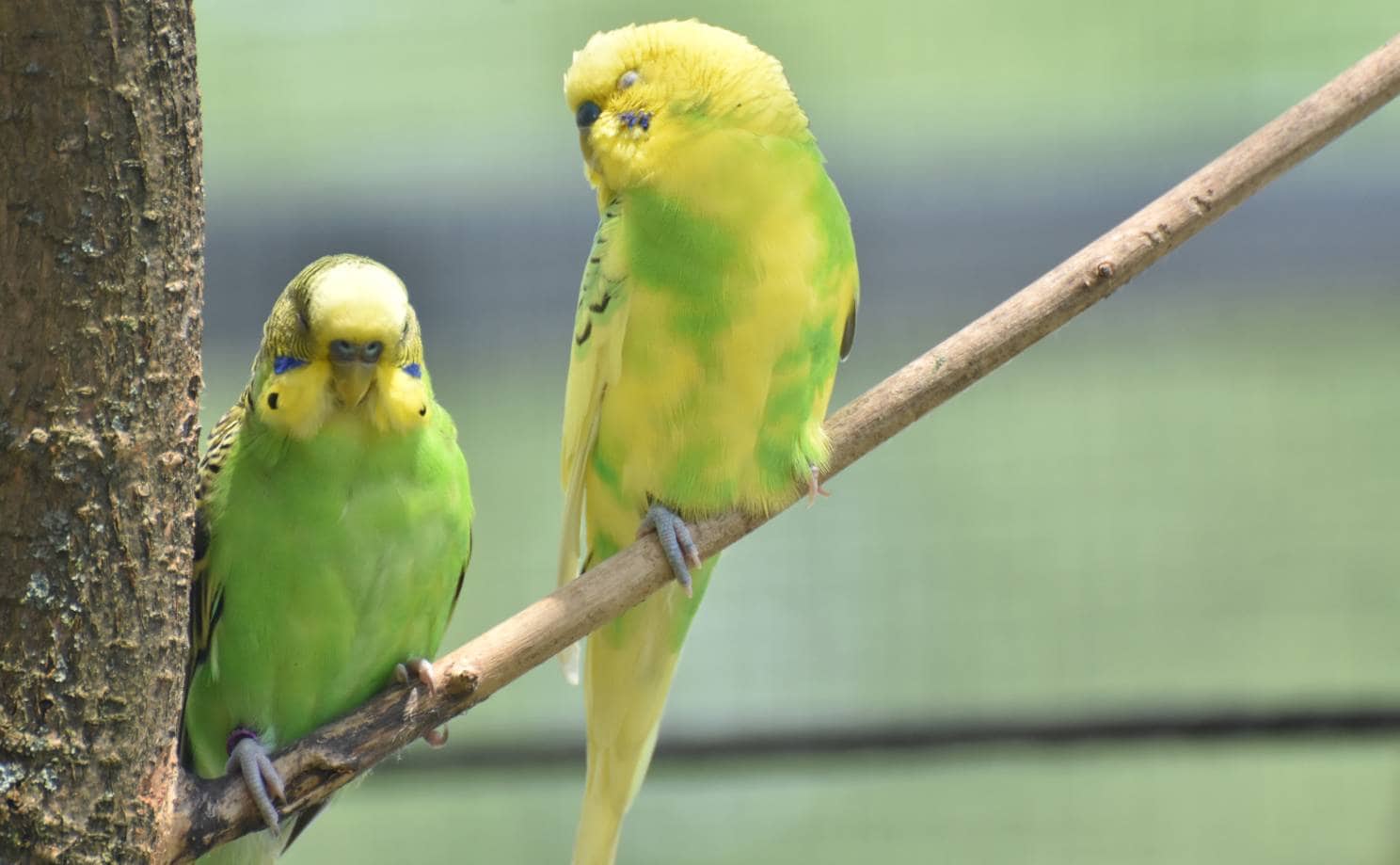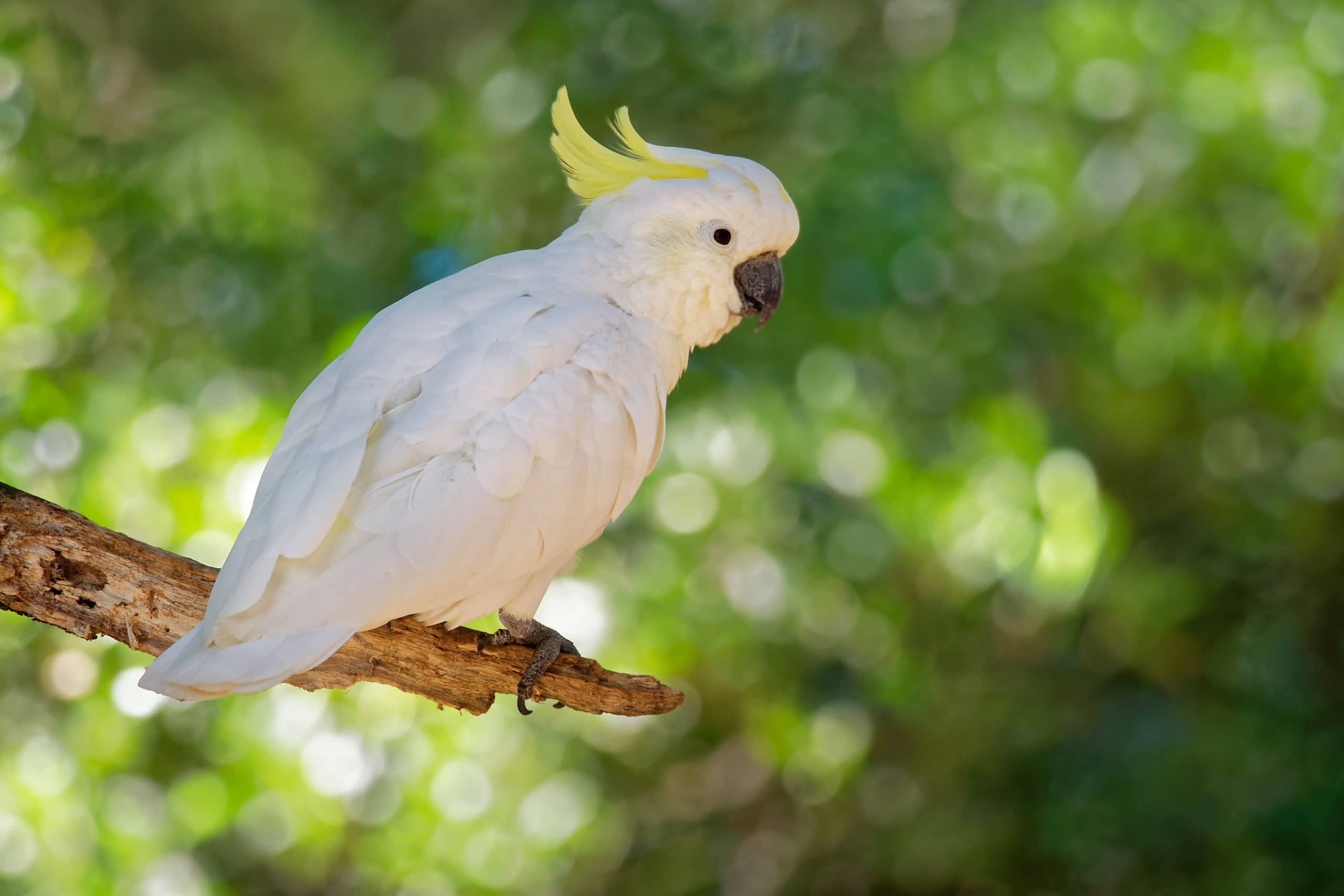
The Lear’s Macaw is a bird that you won’t soon forget after the first time you see it. This one screams attention that is well-deserved. It has the noticeable colors that you often see in animals that live in these habitats. After all, they are competing for the lush foliage and flowers for pollinators and other winged animals to visit. As you may expect, it’s relatively new on the scene because of its habitat.
This bird is long-lived, like many of its ilk. It is also quite vocal with a booming voice to make sure that it is heard in its densely vegetated environment. The Lear’s Macaw is named after the English artist, Edward Lear, who made it a favorite subject of his work. One look at this bird, and we’re sure that you’ll understand his passion and French ornithologist Charles Lucien Bonaparte who first wrote of it.
 Species Overview
Species Overview
| Common Names: | Lear’s Macaw, Indigo Macaw |
| Scientific Name: | Anodorhynchus leari |
| Adult Size: | 27½ inches to 29½ inches; 2 pounds, 2 ounces |
| Life Expectancy: | 30–60 years |
Origin and History
The Lear’s Macaw can thank its recognition to its artist namesake, who illustrated this neotropical bird from the state of Bahia in Brazil. Outside of the country, few people knew of its existence. Then, researchers discovered a small group in 1978. The International Union for Conservation of Nature and Natural Resources (IUCN) identified two breeding colonies of this rare and elusive bird.
Population numbers vary in part because of the remote nature of the Lear’s Macaw’s habitat. Another issue was its resemblance to a similarly colored species, the Hyacinth Macaw. Some believed that the Lear’s Macaw was a hybrid of it. The Hyacinth Macaw occupies a larger range in South America that includes Paraguay and Bolivia. It is also noticeable larger with slightly different facial markings.
Like others of its kind, the Lear’s Macaw forages for breeding ground and food cooperatively with others of its species. They will also alert other birds to the presence of threats. It’s a common strategy in the avian world that benefits both the whistleblower and others in the flock. The Lear’s Macaw mates for life, although mated pairs don’t always produce offspring.
However, the Lear’s Macaw’s diet also puts this species at risk. It subsists primarily on Licurí palm nuts, supplemented with other seeds, fruits, and legumes. Unfortunately, this preference set the bird up for conflict with the agricultural industry. When land is cleared for farmland, the macaw loses its food source. At one time, scientists feared that less than 100 individuals existed in the wild.

Poaching for the illegal pet trade has also been a significant problem. These issues have prompted the US Fish and Wildlife Service to step up and classify the Lear’s Macaw, along with the Military Macaw, Scarlet Macaw, Hyacinth, and Great Green Macaw as endangered species. The global conservation community and the country of Brazil have acted swiftly and decisively to protect the Lear’s Macaw from extinction.
Scientists and local farmers have recognized the uniqueness of the Lear’s Macaw. An action recovery plan exists that closely monitors the population through Biodiversitas’ Canudos Biological Station. Researchers noted that the population of this magnificent bird is increasing in recent years, thanks to the efforts of this conservation success story.
Lear’s Macaw Colors and Markings
The Lear’s Macaw lives up to its other nickname with its striking, rich blue body. Its beak is black, which provides a complementary contrast. Its standout feature is the yellow cheek patches and darker eye-rings. Its feet are dark gray. Taken as a whole, it’s a bird that you can’t help but notice. That’s probably why they have their current conservation status. They are beautiful animals.
The tail and body are about of equal length, following the same color patterns. The colors are less well-developed in juveniles, which isn’t unexpected. The adult coloration goes along a spectrum from true blue to purplish blue. There are no lighter-colored spots on the plumage. Instead, it’s a solid color pattern with the described markings. It can get up to 29 ½ inches long and weigh just over 2 pounds.

Where to Adopt or Buy a Lear’s Macaw
The Lear’s Macaw is an endangered species, according to the IUCN (IUCN). Its estimated numbers are less than 1,000 in the wild. Consequently, you won’t find wild-caught birds legally. The animals you’ll see for sale are captive-caught ones. Because of its status, we strongly urge you to investigate a potential pet’s origin.
As you may expect, several factors come into play that has a direct role in the price. There is the bird’s gorgeous plumage, which drives the cost of the pet through the roof. It’s a bird that you can’t help but fall in love with its beautiful looks. That feeds directly into demand and availability. You can expect to pay at least $3,000 or more likely north of that figure.
You may find a Lear’s Macaw at a pet store or through special orders. Your best luck is finding one online through a reputable dealer in parrots. We can’t emphasize enough to check your source, given the propensity of the black market on species like Lear’s Macaw. We also suggest getting a bird that has been handled at an early age to ensure a pet that will enjoy human companionship.
 Conclusion
Conclusion
The Lear’s Macaw is worthy of all the attention it received because of its stunning looks and comical expression. Everything about this bird is happy and outgoing. You can’t help but smile when you see it. There’s so much to love about this macaw that makes it worth a look if you have the resources to make it—and you—happy.
Having a bird of this size and longevity is often a lifetime commitment. Therefore, we suggest you think carefully about whether getting a Lear’s Macaw or other parrots will fit with your lifestyle. After all, having a macaw as a pet means more of a relationship than you might share with other animals.
Featured Image Credit: Sandro Riedmann, Shutterstock
 Species Overview
Species Overview





